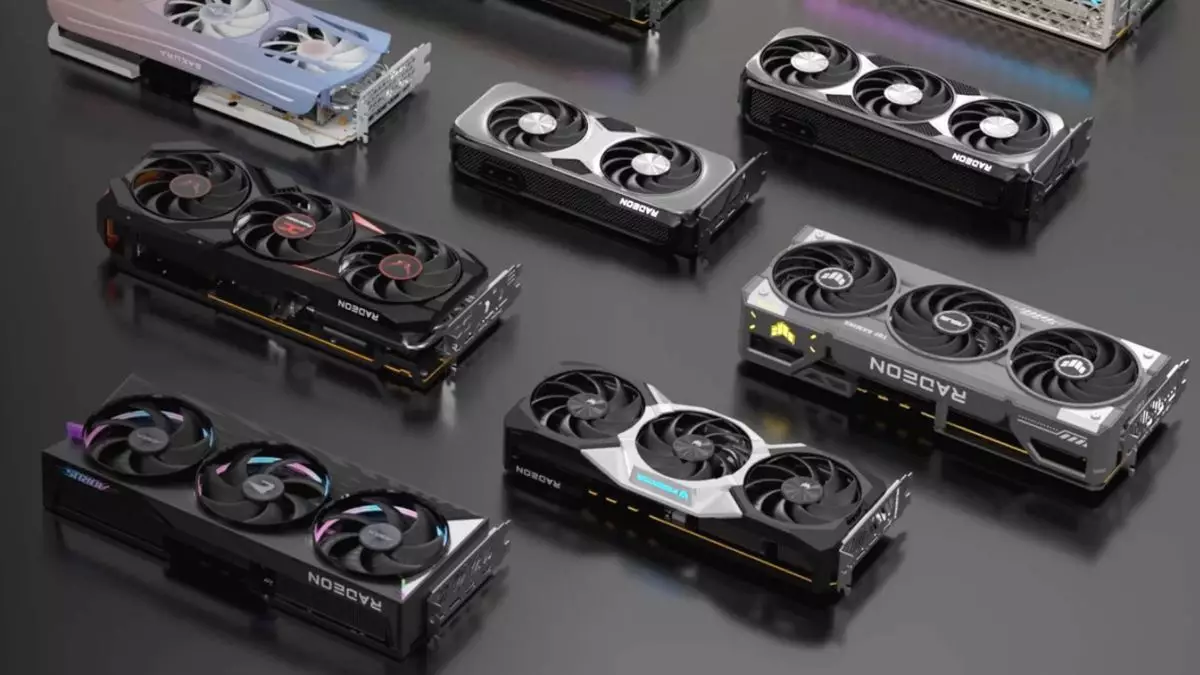As the tech world buzzes with excitement over the upcoming Nvidia RTX 50-series graphics cards, AMD’s next-generation offerings, the Radeon RX 9070 and RX 9070 XT, are also lurking on the horizon. However, AMD’s timeline for the release of these products has become more uncertain than previously thought, leading to a flurry of speculation and anticipation among enthusiasts and gamers alike.
AMD’s Vice President and General Manager, David McAfee, has shed light on the delays affecting the Radeon RX 9070 series. He revealed that AMD is taking additional time to optimize its software stack to ensure maximum performance and to enable more titles featuring FidelityFX Super Resolution 4 (FSR 4). Initially projected to launch at CES 2025, AMD has since chosen not to assign a definitive release date, sparking further intrigue.
The revelation that the cards will be available in March came only recently, yet fans were left craving additional details that AMD has withheld. The landscape of the GPU market is ever-evolving, and it seems that AMD’s strategic decisions are being influenced by multiple factors, including rival pricing strategies and technological challenges.
The timing of the RTX 50-series announcement from Nvidia plays a crucial role in AMD’s calculations. Speculations abound regarding possible shifts in AMD’s designs, including considerations for moving from a chiplet to a non-chiplet architecture. However, Frank Azor from AMD has confirmed that the decision to delay the Radeon RX 9070 series was, at least in part, a response to Nvidia’s surprisingly competitive pricing. This insight indicates that AMD is not only focused on their internal development but is also closely monitoring market dynamics.
Moreover, the complexities involved in adjusting pricing structures cannot be overstated. AMD might be faced with the daunting task of recalibrating its price points to effectively compete in a market where consumer expectations have seemingly changed overnight. Given that board partners may have already stocked GPUs at older price points, any downward adjustment could complicate existing relationships and logistics within AMD’s supply chain.
While the competitive landscape is certainly a factor, Azor has also emphasized the importance of ensuring that the Radeon RX 9070 and RX 9070 XT deliver exceptional performance. According to the AMD team, the extra time spent on optimization will ultimately yield a product that meets or exceeds user expectations. This dedication to enhancing performance is something that fans certainly hope will lead to a strong value proposition against rivals in the RTX 50-series.
In the highly competitive GPU arena, performance metrics are paramount. It’s a realm where even the slightest edge can determine success or failure. Enthusiasts seeking the best potential for gaming and productivity will be closely analyzing benchmarks to assess whether these optimizations have indeed paid off.
As we stand on the precipice of the potential launch of the Radeon RX 9070 series, many questions remain unanswered. Will AMD successfully navigate the complexities of pricing amid fierce competition? Can they harness additional time spent on optimizations to deliver a truly compelling product?
Ultimately, confidence in the Radeon RX 9070 series will hinge not only on the specifications and performance benchmarks but also on AMD’s ability to stand firm in an ever-shifting market landscape. As gaming demands continue to evolve, the market will expect nothing less than excellence, pushing everyone involved to push boundaries and deliver cutting-edge technology.
As the excitement of upcoming launches brews, it remains essential for consumers and enthusiasts alike to be patient and to keep a watchful eye on developments in the GPU space. With both AMD and Nvidia in a race to capture the hearts of gamers and creators, the coming months hold promise for innovative breakthroughs and exciting advancements that could reshape our experiences in the digital world.

